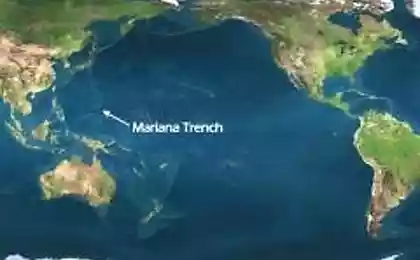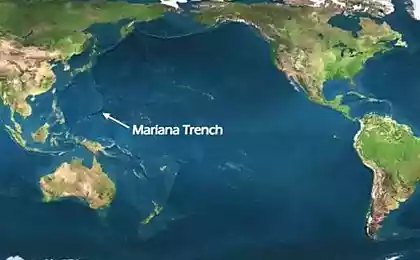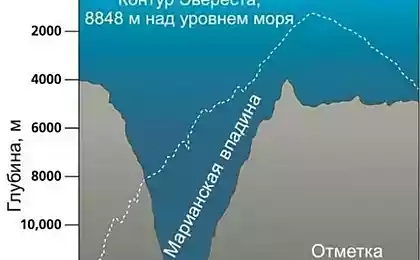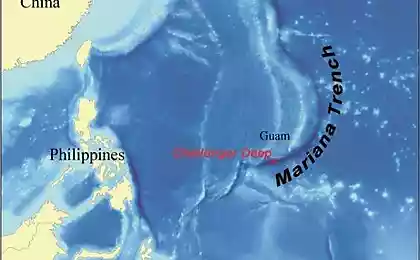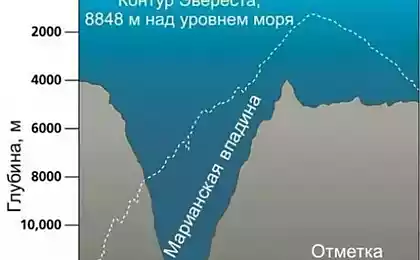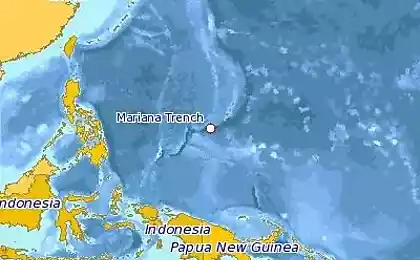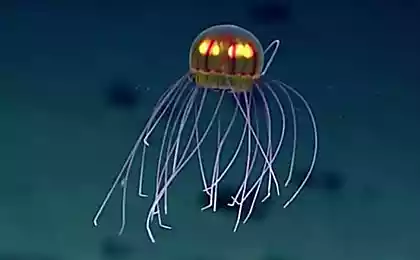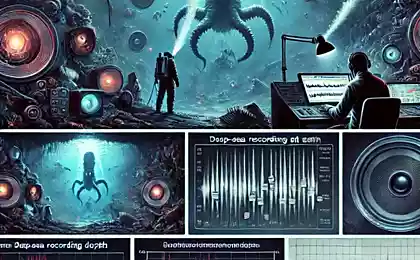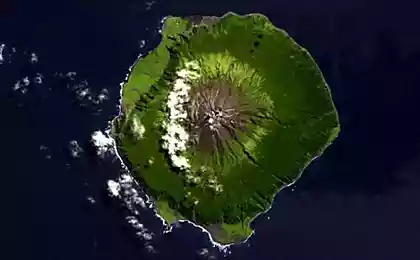3816
Mariana Trench - "Bottom of the Earth."
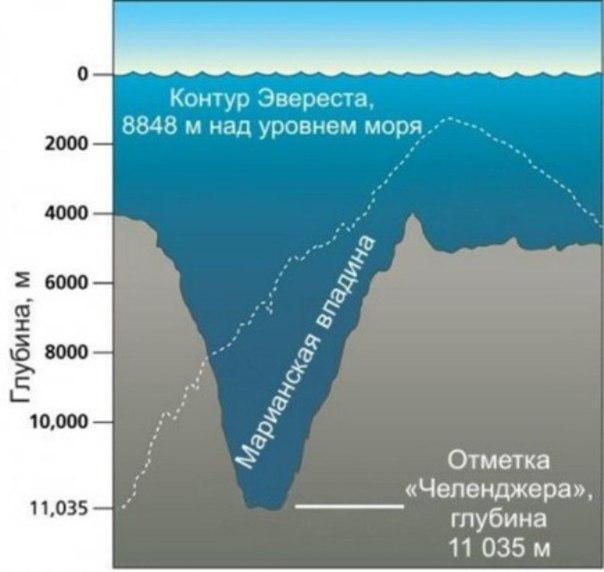
Mariana Trench - the deepest place on our planet. his name this absolute depth was due to nearby Mariana Islands. The entire basin was stretched along the islands and a half thousand kilometers and has a characteristic V-shaped profile. In fact it is a normal tectonic fault, the place where the Pacific plate goes under the Philippine simply Mariana Trench - the deepest point is of this kind. Steep slopes it, an average of about 7-9 °, and the bottom - flat, width from 1 to 5 kilometers, and split into several thresholds of closed areas. The pressure at the bottom of the Mariana Trench reaches 108 MPa 6 - more than 1,100 times the normal atmospheric pressure!
The first who dared to challenge the abyss, were British - military three-masted corvette "Challenger" with sailing equipment was rebuilt in oceanographic vessel for hydrological, geological, chemical, biological and meteorological work more in 1872. But the first depth data Mariana Trench were obtained only in 1951 - according to the measurements conducted by the depth of the depression was declared equal to 10,863 m. After that, the deepest point of the Mariana Trench became known as the "Challenger Deep" (Challenger Deep). It is hard to imagine that in the depths of the Mariana Trench easily fit the highest mountain of the world - Mount Everest, and above it will be more and more kilometers of water to the surface.
Following researchers Mariana Trench were already Soviet scientists - in 1957, during the 25th flight of the Soviet research vessel "Hero", they not only announced a maximum depth of depressions equal to 11,022 meters, but also established the existence of life at depths greater than 7000 meters , thus disproving the perception in the time representation of the impossibility of living at depths greater than 6000-7000 meters.
January 23, 1960 was made the first and only dive to the bottom of the Mariana human Trench. Thus, the only people who have been "at the bottom of the Earth", became the US Navy Lieutenant Don Walsh and Jacques Piccard researcher.
During the dive they defended armored thickness of 127 mm, wall called bathyscaphe "Trieste". Bathyscaphe was named after the Italian city of Trieste, which were produced by the major work on its creation. According to the instruments on board "Trieste", Walsh and Piccard sank to a depth of 11,521 meters, but later the figure was slightly adjust - 10,918 meters.
Dive took about five, and rise - about three hours, at the bottom of the researchers spent only 12 minutes. But this time was enough for them to make a sensational discovery - they found at the bottom of flat fish up to 30 cm, similar to flounder.
Studies in 1995 showed that the depth of the Mariana Trench is about 10 920 meters, and the Japanese probe "Kaik", deflated Challenger Deep in March 24, 1997, recorded a depth of 10 911 4 meters.
Mariana Trench times frightened researchers lurk in the depths of her monsters. The first time was faced with the unknown American expedition of the research vessel "Glomar Challenger". Some time after the beginning of the descent apparatus, recording the sounds of the instrument began to transfer to the surface of any metal rattle sound reminiscent of metal being cut. At this time, the monitor appeared some vague shadow, like a giant fairy dragons with multiple heads and tails. An hour later, scientists are worried that the unique equipment manufactured in the laboratory NASA beams of high-strength titanium-cobalt steel having a spherical structure, the so-called "hedgehog" diameter of about 9 meters, can remain in the abyss of the Mariana Trench forever - so it was decided to immediately lift apparatus on board the ship. "Hedgehog" was recovered from the depths of more than eight hours and as soon as he appeared on the surface immediately put him on a special raft. Cameras and sonar picked up on deck "Glomar Challenger". The researchers were horrified when they saw how were deformed durable steel beams structure, as for steel 20-cm cable, which lowered "hedgehog", the scientists were not mistaken in the nature of the transferred water depths of sounds - the cable was half sawn. Who tried to leave the unit on the depth and why - will forever remain a mystery. Details of the incident were published in 1996, the newspaper "New York Times".
Another clash with unexplained in the depths of the Mariana Trench happened with the German research unit "Hayfish" with the crew on board. At a depth of 7 km machine suddenly stopped moving. To determine the cause of problems hydronauts including infrared camera. What they saw in the next few seconds, it seemed to them a collective hallucination: a huge prehistoric reptiles, glaring teeth in the bathyscaphe, tried to chew it like a nut. Recovered from the shock, the crew powered device, referred to as "electric gun", and the monster struck by a powerful discharge, disappeared into the abyss.
May 31, 2009 at the bottom of the Mariana Trench plunged automatic underwater vehicle Nereus. According to the measurements, it dropped to 10,902 meters below sea level. At the bottom of Nereus took the video, took a few photos and even collected samples of sediment on the bottom. Thanks to modern technology, the researchers were able to capture a bit of the representatives of the Mariana Trench.
